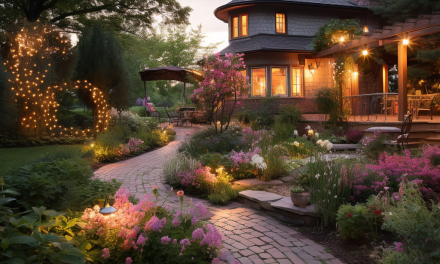Gardens have been a source of solace and beauty for centuries. But they can be so much more than just pretty spaces. A well-designed garden can also serve a functional purpose, transforming your outdoor area into a practical extension of your home. In this article, we’ll delve into the art and science of functional garden design, exploring how to create spaces that are not only visually appealing but also highly practical and purposeful.
Understanding Functional Garden Design
Functional garden design is about more than just aesthetics; it’s about making the most of your outdoor space. It combines elements of horticulture, architecture, and environmental science to create gardens that serve specific purposes. Here, we’ll explore key principles of functional garden design.
1. Purposeful Zones
A well-designed functional garden is divided into distinct zones, each serving a specific purpose. Consider incorporating areas for relaxation, dining, gardening, and play. These zones should seamlessly blend into one another while maintaining their individual functions.
2. Plant Selection
Careful plant selection is crucial. Choose species that not only enhance the visual appeal but also serve a purpose. For instance, fragrant herbs can be both beautiful and useful in your garden.
3. Hardscaping
Hardscaping elements, such as pathways, walls, and pergolas, provide structure to your garden. They not only look appealing but also facilitate movement and define spaces.
4. Sustainability
Incorporate sustainable practices into your garden design, such as rainwater harvesting, composting, and using native plants. This not only benefits the environment but also reduces maintenance efforts.
5. Lighting
Effective lighting can extend the usability of your garden into the evening. Consider solar-powered lights, lanterns, or even professionally designed outdoor lighting systems.
Creating Functional Garden Zones
Now, let’s dive deeper into each of these aspects, starting with the concept of purposeful zones.
Purposeful Zones (Approximately 300 words)
Creating purposeful zones within your garden is the backbone of functional garden design. Begin by dividing your outdoor space into distinct areas, such as a relaxation zone, a dining area, and a play space for children. Each zone should have its unique features and be seamlessly connected to the others.
Image Placeholder 1: Relaxation Zone
Description: An image of a cozy outdoor seating area surrounded by lush greenery, with comfortable furniture and soft lighting.
Image Placeholder 2: Dining Area
Description: A picture of a well-designed dining space in the garden, showcasing an outdoor table, chairs, and a barbecue grill.
Image Placeholder 3: Play Space
Description: An image capturing the play zone for kids, with swings, a sandbox, and colorful play equipment.
Plant Selection (Approximately 200 words)
Careful plant selection is key to the success of your functional garden. Choose plants that not only add to the beauty but also fulfill a specific function. For instance, consider planting herbs like rosemary and basil near your kitchen for easy access while cooking.
Image Placeholder 4: Herb Garden
Description: A snapshot of a neatly arranged herb garden featuring aromatic herbs like rosemary, basil, and thyme.
Conclusion
In conclusion, functional garden design is an art and science that can transform your outdoor space into a versatile and purposeful area. By carefully considering purposeful zones, plant selection, hardscaping, sustainability, and lighting, you can create a garden that is not only visually appealing but also serves practical functions.
By implementing these principles, you’ll be well on your way to enjoying a garden that caters to your needs, whether it’s relaxation, dining, gardening, or play. Start planning your functional garden transformation today and reap the rewards of a beautiful, purposeful outdoor space.

Amazon and the Amazon logo are trademarks of Amazon.com, Inc, or its affiliates.AMAZON AFFILIATE DISCLOSURE The Garden Whisperer Tips blog is a participant in the Amazon Services LLC Associates Program, an affiliate advertising program designed to provide a means for sites to earn advertising fees by advertising and linking to Amazon.com. As an Amazon Associate, we earn from qualifying purchases. Some of the links on this blog are affiliate links, and if you go through them to make a purchase, we will earn a commission at no extra cost to you. AFFILIATE MARKETING AND ADVERTISEMENT TRANSPARENCY At Garden Whisperer Tips, we believe in full transparency with our readers. We participate in multiple affiliate marketing programs, and some of the links on this blog may be affiliate links. This means we may earn a commission if you click on the link or make a purchase using the link. We also host advertisements on our blog, which helps us generate revenue. Rest assured, our editorial content is not influenced by advertisers or affiliate partnerships.




